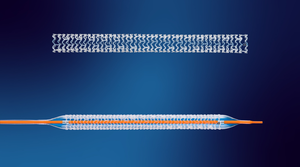Puller and Cutter Produces Medical Tubing
A small sensor is useful for high-volume products with constrained space
October 1, 2006
Originally Published MPMN October 2006
HOTLINE
Puller and Cutter Produces Medical Tubing
|
Speed variation in the puller of a machine has been eliminated through the addition of servo drives on the upper and lower belts. |
A servo-driven puller and cutter produces small-diameter medical tubing, including heart and brain catheters. The MedLine puller and cutter from Conair (Pittsburgh; www.conair.com) includes controls to simplify the production of tubing features, such as tapers and bubbles.
“Servo-drive and control technology have advanced considerably in recent years,” says Bob Bessemer, senior product engineer. The key to the machine’s precise operation, adds Bessemer, is the puller. Speed variation in the puller has been virtually eliminated through the addition of independent, position-controlled servo drives on the upper and lower belts. In-line planetary gear reducers are included as well.
The puller belt also contributes to the precision of the unit. Conventional poly-V belts tend to slip on the drive pulleys and must be coated on contact surfaces to comply with FDA regulations. The MedLine puller uses a self-tracking PD timing belt to avoid slippage. The belt is made of FDA-approved materials. For added cleanliness, a stainless-steel cabinet housing is available.
A touch-screen controller uses microprocessors and software to make complex setups easy and intuitive. The controller allows operators to switch on the fly from a linear velocity profile to a fully optimized profile. The optimized profile automatically programs the smooth acceleration and deceleration needed to make tapered tubing or bubble sections. The controller is repeatable enough to meet stringent medical standards.
The cutter portion of the unit also features a standard positional servo-drive system. The system provides cut-response repeatability within ±0.1 millisecond. Conventional velocity-based servo systems are only capable of repeatability within ±1 millisecond. Cut-response repeatability is related to product cut-to-length accuracy, with fast response becoming more important as extrusion rates increase. The cutter blade descends from above, making it easy to feed cut tubing to discharge conveyors. The cutter guards are transparent, allowing operators to easily see the condition of the blade or the presence of contamination.
Copyright ©2006 Medical Product Manufacturing News
You May Also Like



